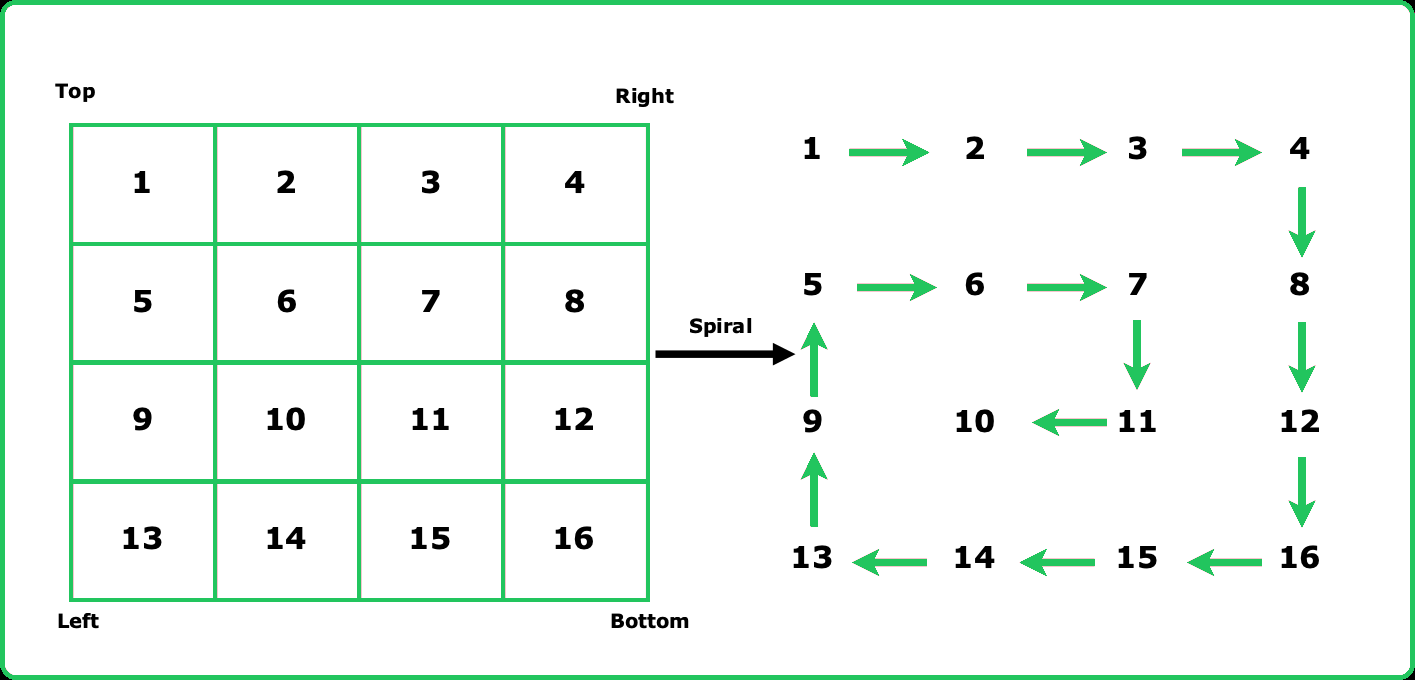Print the matrix in spiral manner
Arrays
FAQs(Medium)
Medium
- This programming problem is integral in the development of Medical Imaging technologies and apps using MRI or CT scans
- These health-tech applications often include features that allow medical professionals to view and analyze 3D scans in a series of 2D slices, which basically requires handling 3D matrices
- The traversal of these 2D slices in a specific orderly pattern, such as the spiral manner described in this problem, allows for efficient and thorough analysis of the images
Given an M * N matrix, print the elements in a clockwise spiral manner. Return an array with the elements in the order of their appearance when printed in a spiral manner.
Examples:
Input: matrix = [[1, 2, 3], [4 ,5 ,6], [7, 8, 9]]
Output: [1, 2, 3, 6, 9, 8, 7, 4, 5]
Explanation: The elements in the spiral order are 1, 2, 3 -> 6, 9 -> 8, 7 -> 4, 5
Input: matrix = [[1, 2, 3, 4], [5, 6, 7, 8]]
Output: [1, 2, 3, 4, 8, 7, 6, 5]
Explanation: The elements in the spiral order are 1, 2, 3, 4 -> 8, 7, 6, 5
Input: matrix = [[1, 2], [3, 4], [5, 6], [7, 8]]
Constraints
- m == matrix.length
- n == matrix[i].length
- 1 <= m, n <= 100
- -100 <= matrix[i][j] <= 100
Hints
- Treat the matrix as a collection of concentric rectangular layers. Traverse each layer in four steps: top row (left to right), right column (top to bottom), bottom row (right to left), and left column (bottom to top).
- Maintain four boundaries (top, bottom, left, right) to keep track of the limits of the matrix as you spiral inward.
Company Tags
Visa
Reddit
Twilio
Square
Nutanix
Flipkart
Target
AMD
American Express
Alibaba
Unity Technologies
Activision Blizzard
Bain & Company
Medtronic
Goldman Sachs
Splunk
Bloomberg
Dropbox
PwC
Philips Healthcare
Oracle
Ubisoft
Uber
JPMorgan Chase
IBM
TCS
Cognizant
Accenture
Infosys
Capgemini
Wipro
